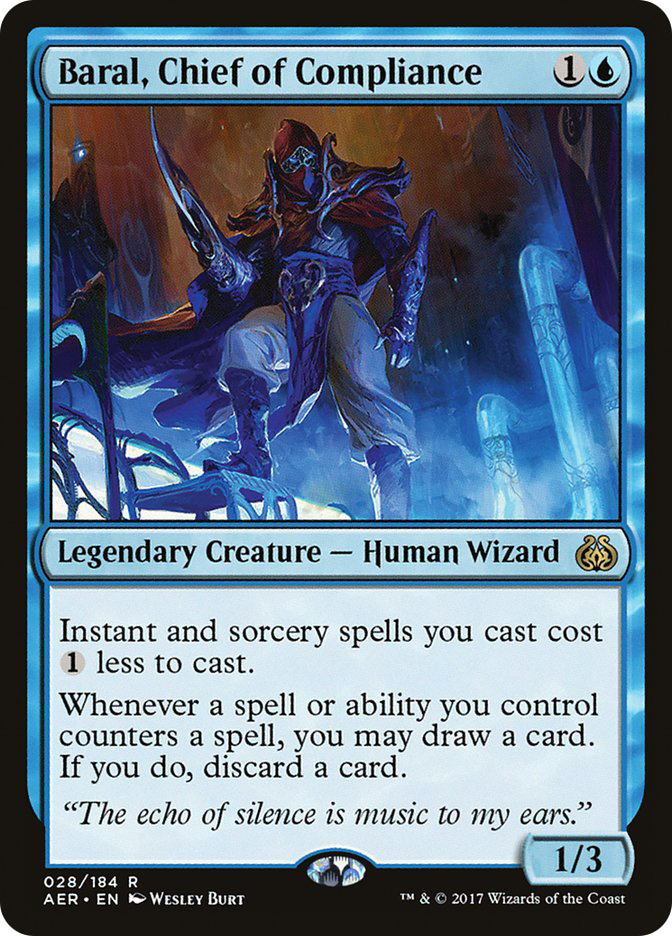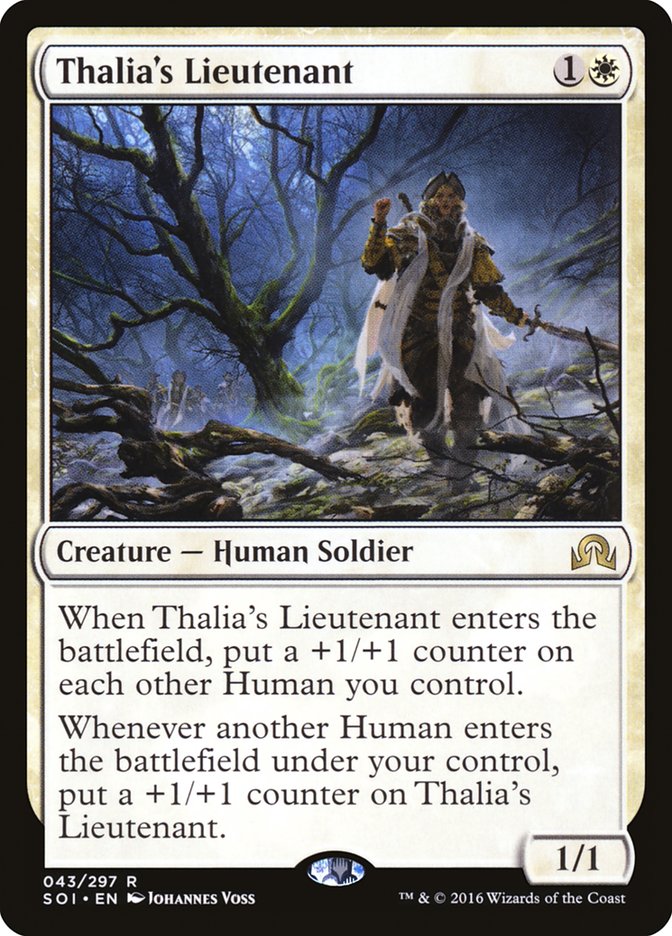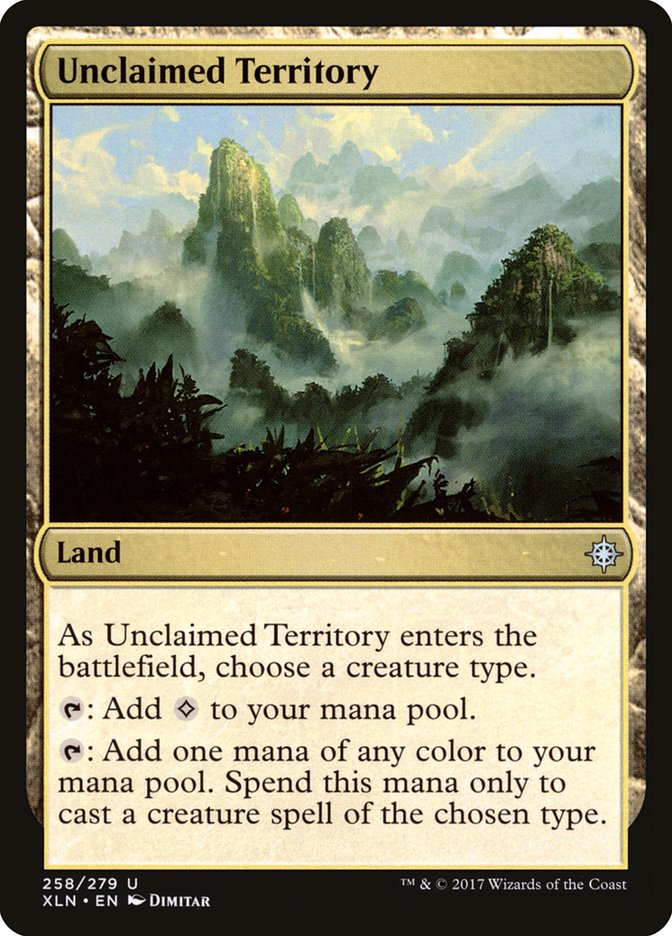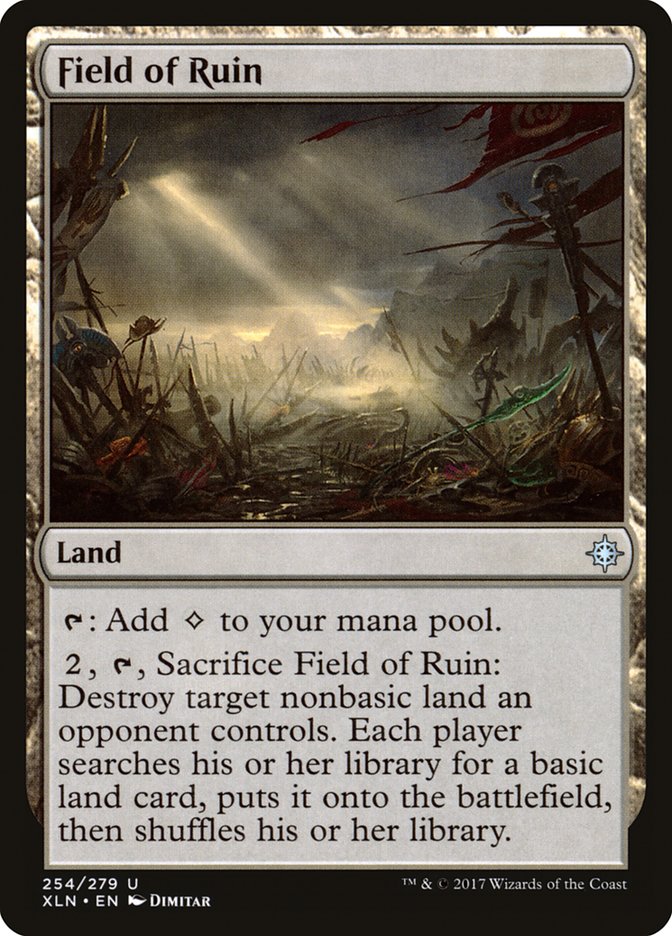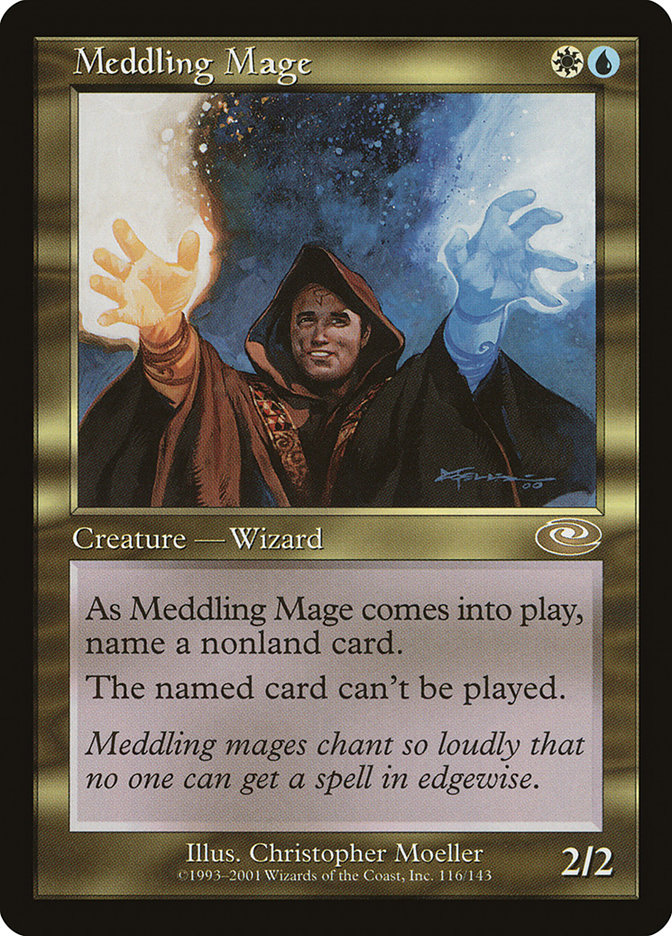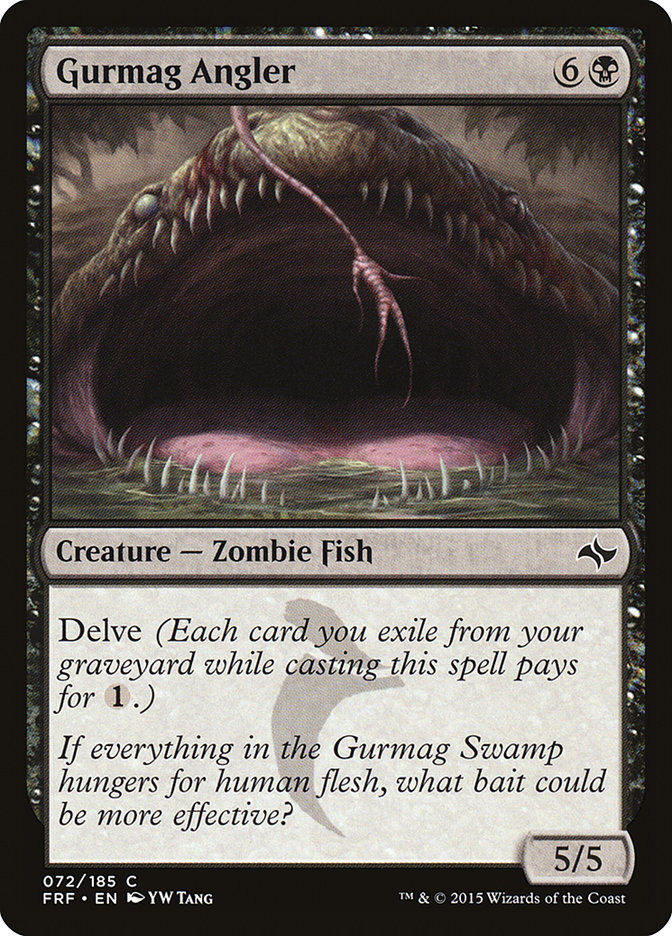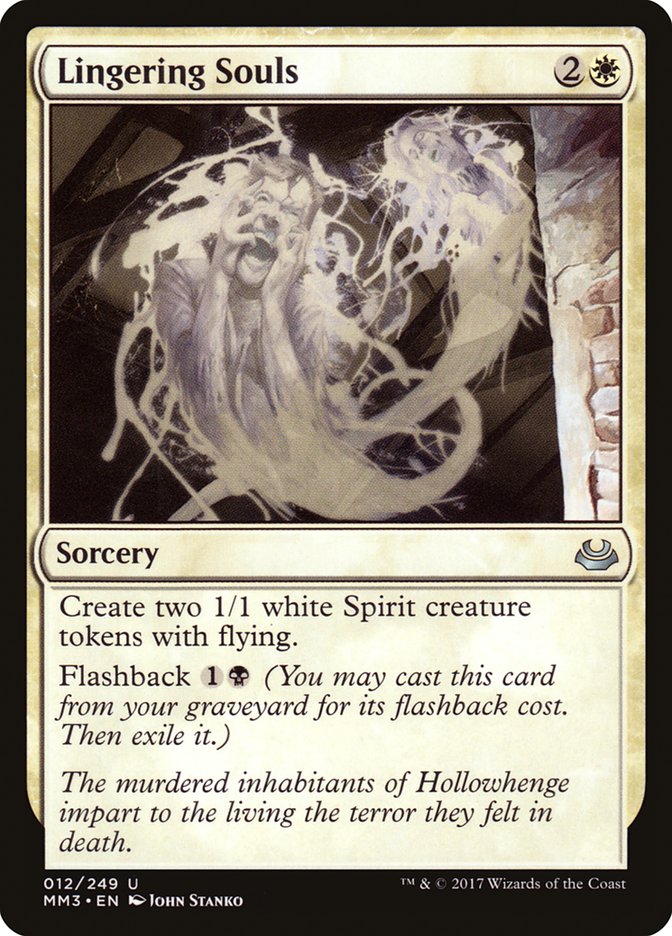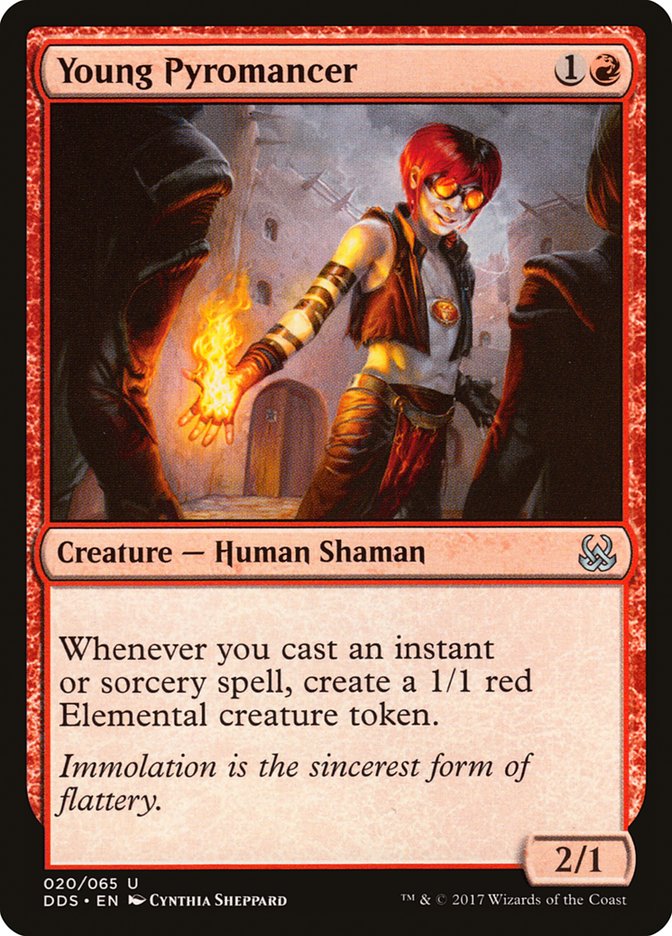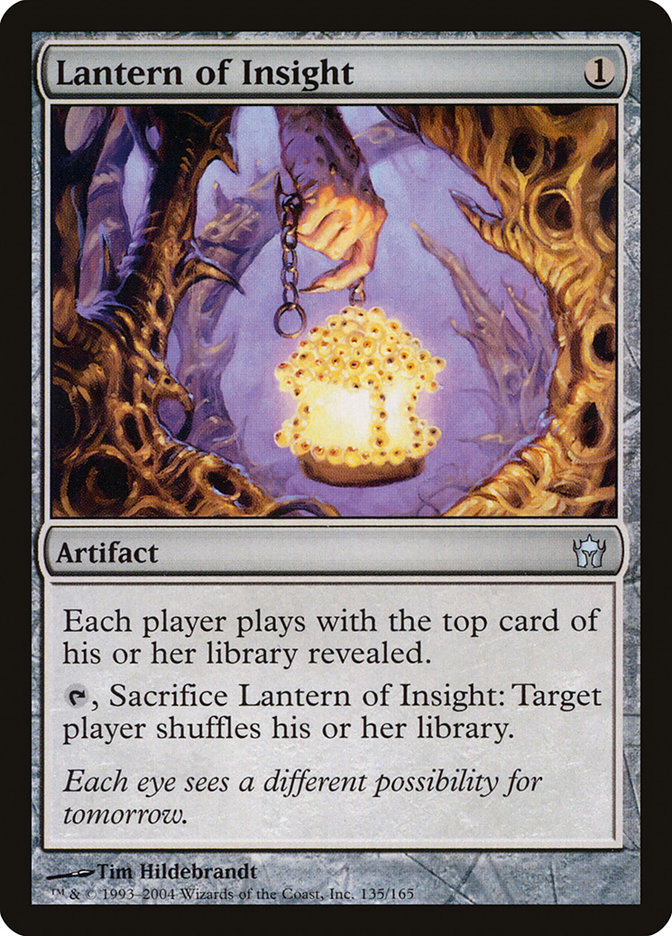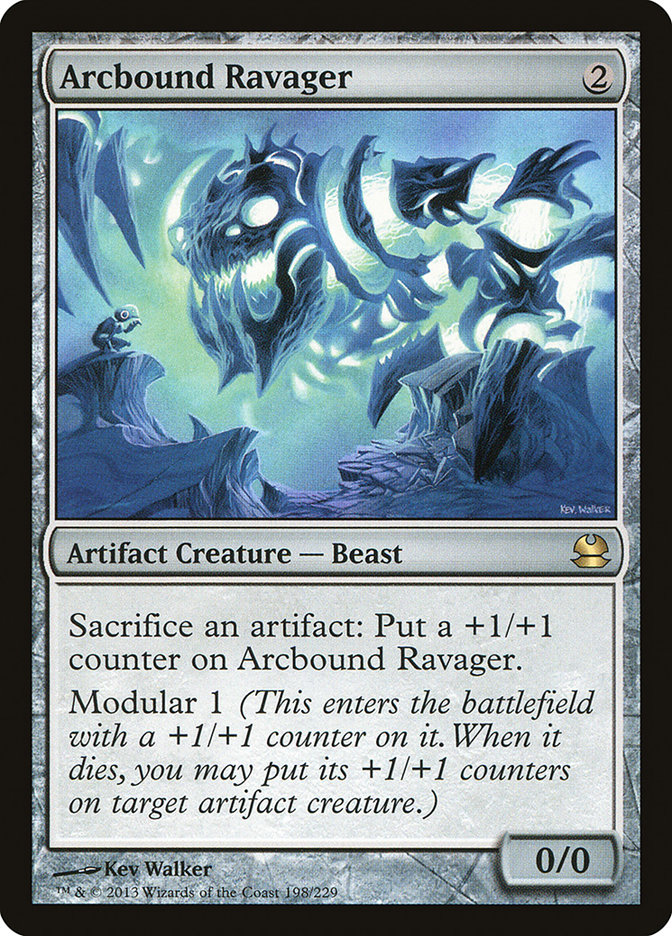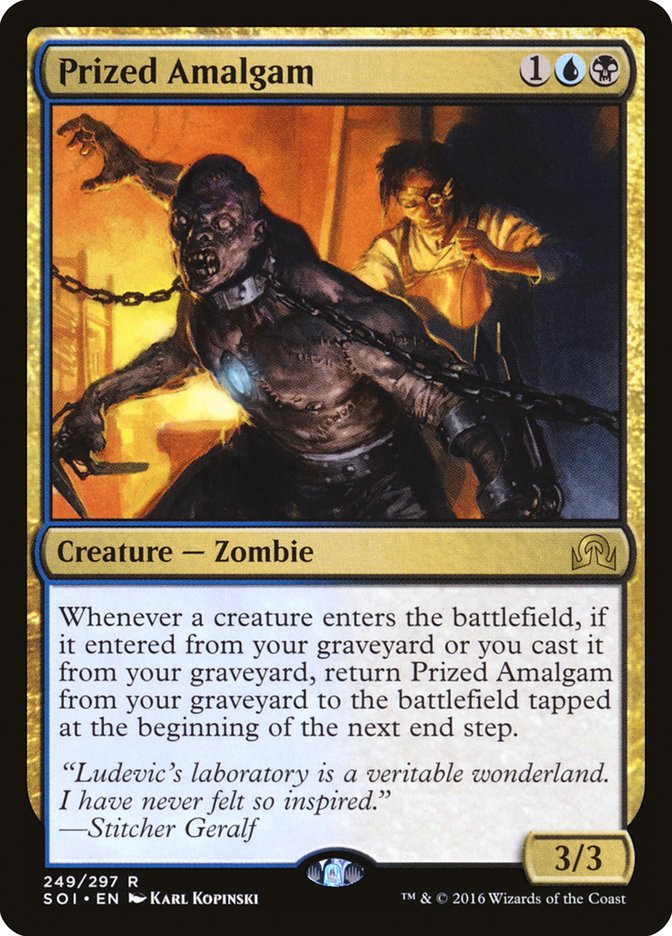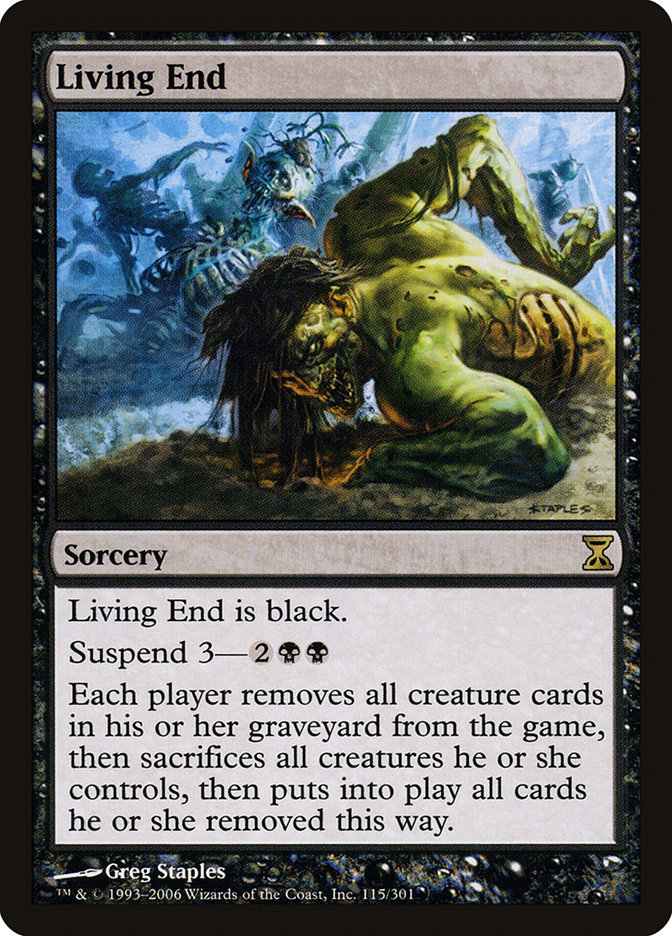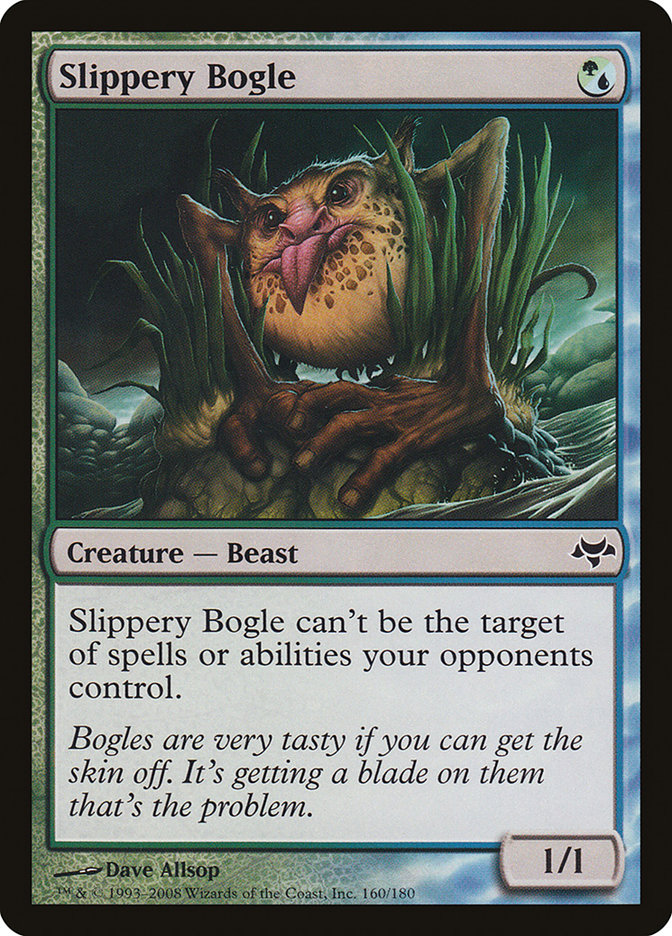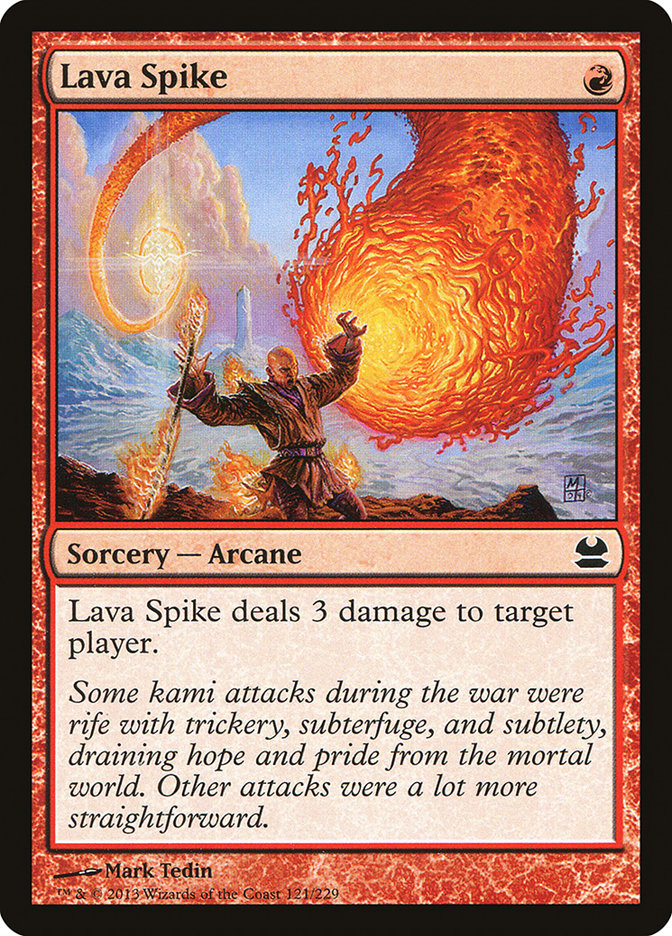The next few months are Modern time for me. Not only are there a ton of Modern Grand Prix and a Modern Pro Tour coming up, but I’m basically locked as the Modern player for all the Team Constructed events I play.
If you didn’t already know my opinion on the format, this is a really good thing.
I’ve spent the last couple of weeks catching up on what I missed while preparing for Standard and Draft at Pro Tour Ixalan. The format has changed a lot in the last month or two, but I’m rapidly catching up. These are the high-level concepts I have locked onto in my testing.
No One Knows What They Are Doing
Modern was such an easy place to be for a long time. Once Death’s Shadow showed up, there were definite rules: “don’t lose to Death’s Shadow,” followed by “don’t lose to Chalice of the Void or Thought-Knot Seer,” then “don’t lose to Primeval Titan,” and then “don’t lose to Goblin Electromancer.”
Somewhere along the line, everyone just lost the thread of the format. Maybe it was that all the Eldrazi Tron players drew one too many “Wastes, Ghost Quarter, Urza’s Mine” hands or their opponents stopped just dying to Chalice of the Void for one. Maybe Storm players had to play against one too many opponents with Relic of Progenitus and Pyroclasm. Maybe Humans just was too easy to figure out how to beat compared to the last couple of big decks. I really have no idea. People now have this idea that everything and anything is reasonable.
I’m here to ruin your fun. It’s not.
Death’s Shadow is still stupidly powerful, and most of these cool decks die horribly to it. They probably also die horribly to one or two of Affinity, Storm, Eldrazi Tron, or Humans, which are the other big decks.
The idea that Modern is this wide-open wonderland is largely a self-propagating myth. People play their cool decks against other cool decks and stuff happens and someone wins. Once natural selection sets in after a few rounds, the format is not that forgiving. You have to play against decks that are brutal in their execution and good at stopping you from doing your thing. Notice that the #SCGINVI last weekend was a lot of the same things we had previously seen and not a big metagame evolution.
Creatures (8)
Lands (18)
Spells (34)

These new, cool decks aren’t terrible, but they lack the refined edge they need to really compete. I think a lot of them are very close, which likely keeps people on them, but you had better be sure your deck has game against the best few strategies over larger sample sizes and varied gameplans.
Ixalan Has Made a Difference
Unclaimed Territory is only the start. Even if you hop past that into my attempts to make Chart a Course happen, there’s still more.
Creatures (4)
Planeswalkers (5)
Lands (25)
Spells (26)

It also turns out you can pay two mana to do nothing in Modern, despite my initial protests. Your deck just has to be really dedicated to doing nothing. Search for Azcanta isn’t a broad-reach all-star the way it almost seemed to be in Standard, but it does something well enough to matter.
The other Ixalan addition is Field of Ruin. Outside of Blue Control, I’ve seen this pop up in G/B decks similar that drop their third color and load up on Tireless Tracker and Dark Confidant to bury people in cards. I don’t know how good the card actually is, but the cost is much lower than Ghost Quarter and Tectonic Edge, as the land eventually converts into a colored mana source. Too many Tectonic Edges keeping you off of Cryptic Command was an issue in previous blue decks that U/W Control never runs into.
I have doubts there is that much more hidden in the set, but five or so cards is a lot for a set based on Dinosaurs versus Pirates.
Meddling Mage Is Really Annoying
More than anything else in the new Humans deck, Meddling Mage just existing in the format is probably the highest-impact change to Modern. Previously, Meddling Mage was a sometimes sideboard card in various U/W Snapcaster Mage decks, which were also honestly only sometimes decks. Now, if you plan on getting anywhere outside the midrange and aggro side of the spectrum, you must have a way to not lose to Meddling Mage.
The really obnoxious part is that Meddling Mage doesn’t just choke out single-win-condition decks. You know what sucks as an Elves player? Getting Collected Company named with Meddling Mage. Or, worse, then the Humans player Kitesail Freebooters your Chord of Calling and Meddling Mages your Ezuri, Renegade Leader. Any less interactive deck where you have a couple of heavy hitters carrying your gameplan is at risk of Meddling Mage shutdown.
Even if I’m playing a linear deck, I want some way to interact with opposing creatures. To use the above Elves example, I would much rather play a Collected Company deck that is a better Path to Exile deck, like Jarvis Yu’s Counters Company. There isn’t a real reason to be super-fast right now, so I would rather have a little ability to not just get Turn 2 locked by Chris Pikula…or whoever the other Meddling Mages are. [Copy Editor’s Note: There are no other Meddling Mages.]
Blood Moon Is In
One of the things I pointed out in my latest revisit of the Modern macro-archetype matchups was that 2017 really defined what a Modern Prison deck should look like. Modern doesn’t have the redundant fast mana or lock pieces that exist in Legacy and Vintage. The Prison decks pick one lock piece to attack with and build up a backup plan that hopes to be good enough the rest of the time.
Right now that lock piece is Blood Moon.
I’m not quite sure why Blood Moon is the hot new thing. It doesn’t just shut people down the way it could in the Amulet Bloom days. Everyone has a way out, even the all-nonbasic Humans decks.
Creatures (14)
Lands (21)
Spells (25)
- 4 Lightning Bolt
- 3 Mana Leak
- 4 Serum Visions
- 2 Blood Moon
- 3 Opt
- 3 Engineered Explosives
- 1 Remand
- 2 Spell Snare
- 2 Cryptic Command
- 1 Thought Scour
Sideboard

I guess the better thing to examine is that Blood Moon is showing up in a lot more fair shells than unfair ones. These are decks that aren’t expecting Blood Moon to hard lock their opponents. They just need it to cripple them enough that their mostly functional setup beats an opponent’s half-functional mana.
Creatures (10)
Planeswalkers (1)
Lands (20)
Spells (29)

There aren’t a lot of Simian Spirit Guides in these decks. If a threat or two sneaks in under the Blood Moon, that isn’t a big deal. Your eggs aren’t all in the three-mana enchantment basket; you can Lightning Bolt them down like a normal person. This also isn’t the classic “Affinity sideboards in a Blood Moon” strategy for many of the same reasons. Your opponents will be playing a partial game with you down three mana and a card; make sure your deck is good at coming back from that.
The natural reaction to this should just be having Blood Moon on your radar. Slightly more reactive fetchland use is important so you can make a “basic or nonbasic” decision a little later, which in turn makes Opt a more interesting card than it normally would. Know the general signs of a Blood Moon deck so you can react and make a game out of it.
Creatures (7)
Planeswalkers (6)
Lands (19)
Spells (28)

On the note of “Blood Moon is weird,” this Blood Moon surge is happening at a time where Big Mana is on the downswing and the most popular Big Mana strategy is the one Blood Moon is worst against: Tron. Eldrazi Tron only needs a single Wastes or Mind Stone to turn back into the perfectly fine normal Eldrazi deck, and I think it’s possible I have a winning game record against Blood Moon with traditional Tron. The one thing I might consider for classic big Tron is whether G/B is really better than G/R. Losing access to your basic interactive cards in the face of Blood Moon really changes how those games play out. It is possible that the Pyroclasms or whatnot you would be playing just don’t matter in these Blood Moon matchups the way Combust used to, but it’s worth a look.
Don’t Die to Gurmag Angler
This was a lesson from playing the Four-Color Reveler deck. While I did get off to a good start in the recorded rounds, I was promptly bounced by two Thoughtseize decks.
There are literally two Terminates in that deck to kill anything with four or more toughness. Even with sideboarding, you are going to have to trade two Lightning Bolts for any Tasigur, the Golden Fang your opponent produces.
Oh well. It’s not like Fatal Push is a super-prevalent card that Modern has spent ten months rebuilding itself to minimize or anything. I’m sure that Lightning Bolt plus Lightning Bolt will be enough when your deck can’t match their 5/5s with 5/5s.
You need some ways in your deck to just get something dead. That something can be “your opponent,” but only if you plan on winning the game by Turn 4 without relying on ground combat that a 5/5 Zombie Fish gums up. The numbers aren’t the most exact, but there’s some sizing math going on there. If you can fight a 5/5 in combat but not a 6/7 Tarmogoyf or giant Death’s Shadow, you can lean more on Fatal Push. If even a 4/5 Tasigur is enough to brick-wall you, stick with the real “kills anything” answers.
Diversify Your Threats
This was another huge lesson of going down the Bedlam Reveler road, but really it’s a hand-me-down point from Grixis Death’s Shadow. In your midrange decks, you need your threats to handle different scenarios more than you need them to adhere to some standard.
Creatures (11)
Lands (22)
Spells (27)

Let’s talk about a deck that fails this test. I proposed this Jeskai deck as a way to bury people in cards with two-for-one threats alongside Chart a Course.
Here is what will actually happen if you play this deck. You will maybe have a good Game 1 every so often against someone who draws two Fatal Pushes. Then suddenly you will lose a bunch of sideboarded games to sweepers. Your midrange deck should not lose to Izzet Staticaster.
A lot of the Lingering Souls decks run into this issue. Mardu ones with Young Pyromancer are the obvious example, but often Abzan lists end up falling into this trap too. Lingering Souls plus Dark Confidant and Noble Hierarch is a liability, or maybe Izzet Staticaster is just a really darn good card. Or your Young Pyromancer plus Lingering Souls deck is a liability against Engineered Explosives or Pyroclasm or whatever similar card your opponent produces.
Remember how I said this was a hand-me-down from Death’s Shadow? This is the same concept as not having all of your threats get shut off by Rest in Peace. If you look back even further, this comes from Scavenging Ooze, Tarmogoyf, and Lingering Souls all losing to Relic of Progenitus. Your midrange deck should not lose to graveyard hate.
It is fine for some of your threats to have weaknesses in exchange for their strengths. Just make sure they don’t all share the same issues.
Hate Artifacts and Exile Graveyards
What sideboard slots should you spend caring about the weird linear parts of the metagame?
You should definitely have artifact hate. Lantern Control is making inroads. I wouldn’t want to specifically prepare for Lantern Control, but fortunately people still play a lot of Affinity and you can Ancient Grudge both right on out of the game.
Graveyards are a little trickier. I don’t think any of the true graveyard decks is that great right now. Dredge suffers due to the limits of its interaction, and the other graveyard decks fall too close to the combo category and get eaten alive by Stubborn Denials and Meddling Mages.
While I don’t think you need dedicated graveyard hate, having access to some way to exile graveyards is nice. There are Gurmag Anglers, Snapcaster Mages, and Bedlam Revelers to stop. Danny Jessup’s choice of Nihil Spellbomb over Grafdigger’s Cage is on point as long as Collected Company stays on the fringes.
Creatures (16)
Lands (18)
Spells (26)

The thing about having graveyard hate for those cards is you don’t actually want that many cards. Even Danny’s two-of Nihil Spellbomb is on the high end for me. This is more of a “throw a Relic of Progentius in to tie the deck together” kind of thing, and not a “play four Leyline of the Void” thing.
What about the other linear decks? Honestly, I don’t think any of them has the raw power needed to dedicate actual slots to them. Not that they can’t win games, but your Burn opponent isn’t actually a lock to outrace your playable Modern deck the way they were a year ago. Or, more accurately, your natural interaction is good enough and you can get away with other general-purpose cards. The answers and threats are just good enough these days to carry without specific assistance.
Modern Is Still Modern
Modern right now can be a bit daunting. There are lots of different powerful things people are trying to do, and because the format is all over the place, it’s hard to determine exactly which of these strategies are actually great and which opposing strategies you need to address.
The same advice as always applies. Find the high-level things you can address in deck design and address those. Don’t worry too much about the nitty-gritty details until they are across the table from you.



